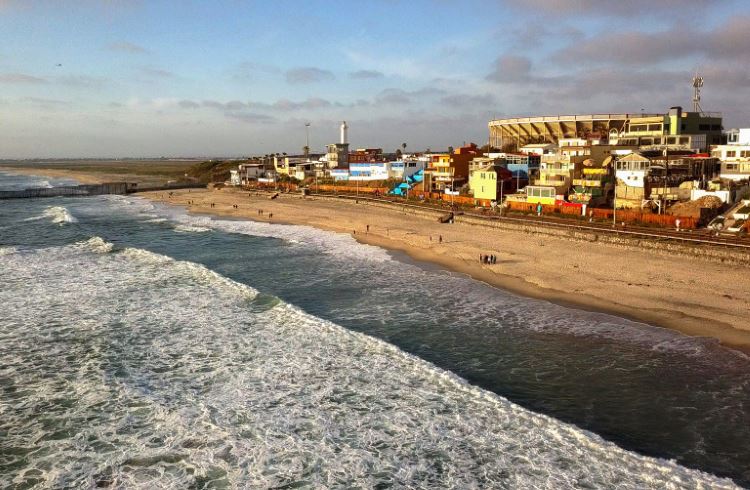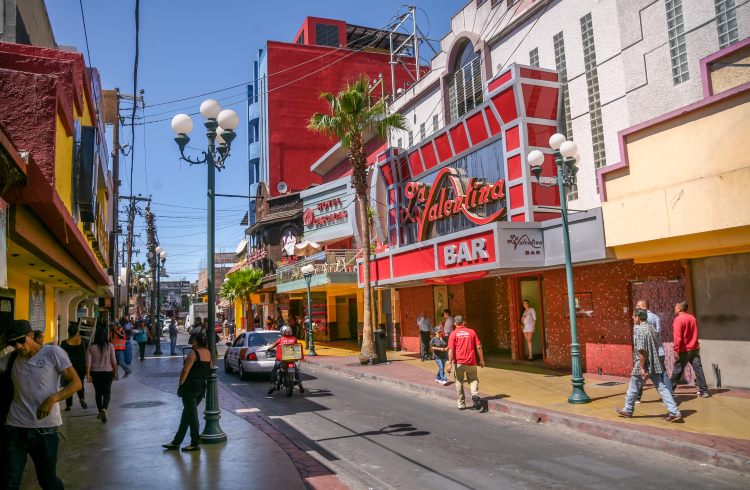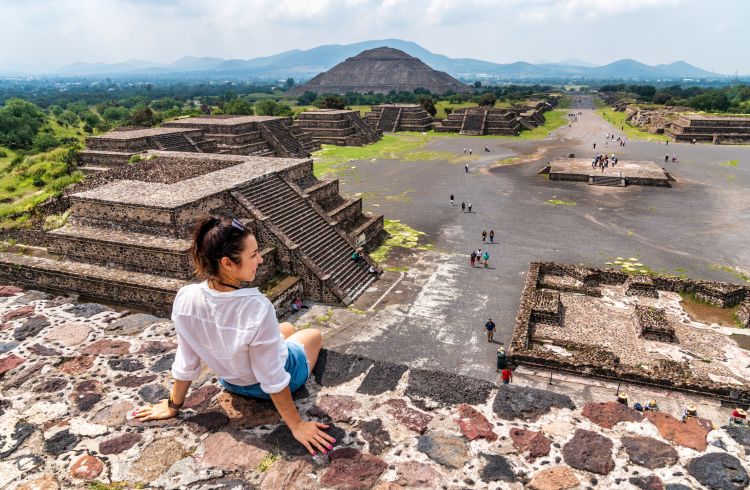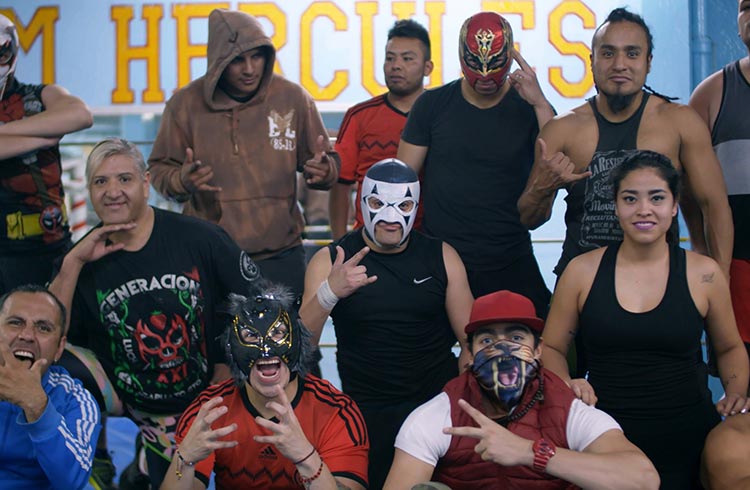Is Tijuana Safe? Crime, Scams, and Travel Safety Tips
This busy city on the border of Mexico and the US has a reputation for violent crime, but just how dangerous is Tijuana now? Former drug war correspondent Joe Furey offers a balanced view of the risks, along with his tips for staying safe and avoiding trouble.
 Photo © Getty Images / grandriver
Photo © Getty Images / grandriver
Tijuana is Mexico’s sixth biggest city and, according to the country’s 2020 census, its fastest growing. But to describe it in a strictly Mexican context is to misrepresent it.
With San Diego, it’s part of a transnational metropolitan region with a population of around five million – and the border between these two international sister cities is the busiest land crossing in the world. But despite its often negative border-town reputation as a “city of migrants”, Tijuana has carved out a new identity as a serious foodie destination, and its reputation for gourmet food, drawing on culinary influences from across the Americas, has fostered a general creative buzz, inspiring a generation of artists, photographers, ceramicists, writers and filmmakers to stay in their city, and a great many creatives from the US to move there.
Tijuana often makes the news for the wrong reasons and is the subject of countless scare stories, so as a former drug war correspondent, I hope to disentangle fact from fiction and offer a balanced view of a city I love and am happy to recommend to visitors who are smart enough to take advice.
- Violent crime in Tijuana
- Drugs and drug cartels
- Common scams
- Transport
- Corruption in Tijuana
- LBGTQ+ traveler safety
- Crossing the border from the US
Violent crime in Tijuana
Tijuana closed out 2022 with approximately 2,000 murders. Though the figures are frightening, as the writer Mark Twain put it, there are “lies, damned lies, and statistics”. A closer, detailed look at the stats reveals not a city in a state of siege by organized crime, but, particularly in the east, a number of poor neighborhoods in the vise-grip of drugs: their sale, their consumption and their gang rivalries. Accept no invitations to house parties in Sánchez Taboada, Reforma, Camino Verde, and, farther out, Mariano Matamoros.
The rule is, if you’re looking for trouble in Tijuana, it will find you first, and a beefed-up police presence, as you’ll encounter in Zonas Centro (the main tourist area) and Norte, is no insurance against events taking a turn for the worse. Zona Norte, Tijuana’s red-light district, is a case in point. Prostitution is legal in this “zone of tolerance” but be aware that brothels often pose as strip or hostess clubs, and that the paraditas (“standing girls”) advertising their services in Callejon Coahuila generally have muscle lying in wait. For those taking insufficient precautions, drink-spiking, sexual assault, robbery with menaces, muggings, and kidnappings (usually of people spending with obvious abandon) are not uncommon. However, a sense of proportion obliges me to say that that would be true of any city with a relaxed attitude to vice.
US travel advisories have recently warned against traveling to Tijuana – and they have had their own motives for doing so (keeping tourism in-country, for one).

Drugs and drug cartels
While much of the violence in Tijuana in the past 20 years was down to a turf war between drug cartels trying to secure one of the most lucrative cocaine smuggling corridors into the United States, the violence of late has been more localized, as street gangs vie for control of depressed neighborhood blocks to sell crystal meth and heroin to residents. This activity is easier for tourists to avoid, but the desperate have a habit of showing up where they’re not wanted. Having said that, in all the considerable time I’ve spent with friends in Tijuana’s tourist-friendly areas – Zonas Rio, Cacho, and the well-lit parts of Centro, green Chapultepec, and Playas de Tijuana – I’ve not witnessed a single incident that would make someone so much as stroll for cover.
At night, if in doubt, stick to well-lit streets, and if you’re going somewhere unfamiliar, jot a map of it on a piece of paper – not everyone who consults their phone on the street gets it stolen, but it’s a safe bet that those who have had their phone stolen on the street were using it and looking lost.
Common scams
If you’re on foot, don’t walk from the border to downtown Tijuana after dark. The shadows hold their share of drunks, addicts, beggars, and chancers (in the mistaken belief that Americans will have brought all the money they might need over the border). Plus, a colectivo (local shared minibus) costs practically nothing, you’ll have company, and you won’t be overcharged (which is more likely in a yellow cab than in a white Taxi Libre, but either way you should insist that your driver uses the meter).
Don’t engage with strangers in the street, however hard their luck sounds. Just think – why would a Tijuanan ask you, a foreigner without any local knowledge, to help them? People claiming to be lost or to have been robbed or raped, are rarely telling the truth or operating alone (pickpockets tend to be double acts). Look for groups of other visitors, and wave to them as though they’re family, whether they see you or not – con artists don’t like to be outnumbered.
Carry your cards and cash in a money belt, and keep a decoy wallet handy in case of muggings. A few dollars and some dead cards will be enough to satisfy a thief, who won’t hang around to check the viability of the cards.
Transport
Taxi drivers in Tijuana aren’t averse to scamming, so Uber might be your best bet for a haggle- and hassle-free ride. Also, when taxis are held up – rare but not unheard of – their drivers are often in on it, so if you do take one, don’t hail it from the street.
Another good option is to use your own vehicle. One of the great advantages of driving into Tijuana is that the entire Baja California peninsula is included in the Mexican Free Zone, meaning you don’t have to stump up for a Temporary Vehicle Importation Permit and you can drive unimpeded from the city all the way down to Cabo San Luis in Baja California Sur. Do take out Mexican car insurance, though.
Corruption in Tijuana
The one obstacle to my free-thinking about driving around the Baja is police corruption, which at the municipal and state level, while greatly improved since the bad old days of Felipe Calderón’s presidency, still poses a concern. As reliable figures are hard to come by much of the “evidence” is anecdotal, but I know a couple who were stopped by uniformed officers for trumped-up reasons and invited to bribe their way out of jail.
LBGTQ+ traveler safety
Tijuana prides itself on being an “anything goes” city but, despite its twin streaks of Catholic conservatism and machismo culture, Mexico, in toto, has got behind LGBTQ+ rights. It was the second Latin American country to enact anti-discrimination laws for the LGBTQ+ community and in 2011 the Mexican Constitution was amended to reflect that. Transgender identities are celebrated among the Zapotec people of Oaxaca state and the Yucatán Mayas.
Crossing the border from the US
Visitors must have valid passports, visas, and a Tourist Migration Form (FMM), a short-term permit that allows for stays of up to 180 days. Expect long waits when crossing back into the US, both by car and on foot.
Related articles
Simple and flexible travel insurance
You can buy at home or while traveling, and claim online from anywhere in the world. With 150+ adventure activities covered and 24/7 emergency assistance.
Get a quote

No Comments